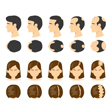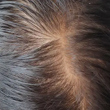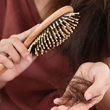Minoxidil Myths on Hair Growth Debunked

Minoxidil is a topical drug that can be used to stimulate hair growth in men and women. It is the only product that has been clinically proven to do so. There are, however, a lot of misconceptions and hair fall myths about this drug and its uses.
Studies show that Minoxidil can cause hair growth of up to 25% over 12 months, but it only works for about 50% of the people who use it. That means you're likely going to be disappointed if you use Minoxidil as a hair loss treatment.
But don't let that stop you from trying Minoxidil if you want to see whether it works for you!
Myth 1: Minoxidil leads to excessive hair shedding
When applied to the scalp, Minoxidil leads to excessive hair shedding in the first few days of usage. This shedding phase usually lasts only for a few days or weeks before normalcy is restored, after which you can witness new hair growth.
When you first start using Minoxidil, you will notice that your hair becomes thinner during the first week or two. However, if you stick to the medication regimen, this should resolve itself.
Many people think that this shedding phase means that their hair is permanently lost, but it's just not true. Minoxidil works differently on different types of hair.
The hair follicles get shocked by the sudden exposure of Minoxidil and shed a massive amount of hair. This effect is temporary and will stop within a week or two of usage. Once the shock is over, the Shedding will decrease in amount.
This phenomenon can be used to your advantage in the following way:
Shedding after using Minoxidil for six weeks indicates you are responding well to Minoxidil. You must continue with it to see how much further improvement can be made.
Myth 2: You don't require medical assistance while using Minoxidil
Yes, you will have to visit your doctor to get a prescription for Minoxidil. This is a common misconception because most people believe that they don't require any medical assistance while using Minoxidil.
Your doctor will be able to suggest the correct dosage and frequency depending on your hair condition. If you’re prescribed a hypertension drug, please ensure that you consult your doctor before taking Minoxidil. Drug interactions can lead to side effects due to cross activity.
Some medicines that can be used with Minoxidil are Finasteride. An important point to be considered is that always refer to a dermatologist to be sure about the hair condition and treatment regimen.
Minoxidil is a topical lotion that is available in two strengths, 2% and 5%. The higher strength minoxidil is not approved for women. It is applied to the scalp twice daily.
Although Minoxidil does not prevent hair loss, it can help you regain lost hair and even encourage new hair growth. But, like most treatments, it does not work for everyone, and some people experience side effects while using it.
Myth 3: Minoxidil leads to loss of libido
One of the most common myths is that Minoxidil can cause loss of libido in men, which is not valid.
The myth about Minoxidil and the loss of libido has been around for years. Even though there is no evidence to suggest that Minoxidil is linked to loss of libido, consult your doctor if you experience any side effects while using Minoxidil.
As you can see, it is pervasive for myths to be perpetuated in the world of hair loss. A lot of this has to do with the fact that there are not a lot of clinical studies on hair growth products available for consumers to review.
If you are thinking about trying Minoxidil, we recommend speaking with your dermatologist or general physician first before taking them
Myth 4: Minoxidil doesn't give results
Minoxidil is one of the best-known hair loss remedies. It has been proven to work for millions of people around the world. It is a great tool to use with other techniques that are shown to grow hair.
The first step to using Minoxidil is to use it every day. If you miss an application, don't worry! Keep up with your routine, and you will see results even if you do miss one day.
Most people start seeing results after about four to six months of daily use. The results are usually not dramatic but tend to be gradual. However, if you stop using Minoxidil, your hair will stop growing again. So always make sure that you are sticking with the routine of using it every day!
The fact is that most men who use Minoxidil as a treatment for hair loss see results between 6 to 9 weeks. However, it is also true that patients see hair fall in the first two weeks of using this product followed by scanty hair growth between 4-8 weeks. Hence, you have to use it for a while until your body gets used to the medication. It is a slow process, but it works.
Myth 5: Minoxidil doesn't have side effects
While the substance may cause no immediate or noticeable side effects, it can have serious long-term side effects. Some of the most common include allergic reactions, heart palpitations, and an increase in hair on non-treated areas of the body.
If you're experiencing any of these, stop using the solution and consult your dermatologist as soon as possible.
The following are some of the possible side effects of Minoxidil:
Itching
Burning Sensation
Irritation
Dryness of scalp and skin
Stinging of scalp and skin
Tingling sensation on the scalp
The skin surrounding the treated area may appear red and show signs of swelling
A sensation of numbness or tingling around the mouth and nose
Conclusion
Understanding minoxidil as a treatment regimen can help make better use of it. Get the facts straight before starting treatment. Some myths circulate about Minoxidil that must be debunked before you can see the best results. This is one of the most popular treatments for hair loss, yet many still think it doesn't work or that it won't work for them.
Not everyone will indeed see results from using this product, but many people do, and if you want to know if it's going to work for you, you should understand how it works and what to expect from its use.
Disclaimer: Minoxidil is a prescription only drug. It is to be taken only after a dermatologist's assessment and prescription. Please consult your dermatologist for further guidance.
Myth Busters HairFall

Androgenetic Alopecia - Everything You Need To Know
Have you been experiencing excessive hair fall over a prolonged period of time? It could be an early sign of androgenetic alopecia. It is a hair loss disorder common in both genders and can lead to progressive thinning and even baldness in some patients if not caught and treated early.

How To Make Hair Grow Faster For Men
A head full of healthy hair is a matter of confidence. Hair has its own mechanism of growing and shedding, and it is when this mechanism is thrown off that growth is hindered. Especially in the case of males, hair growth faces a lot of hiccups that can easily be managed.

Female Pattern Baldness - Causes & Treatments
Have you suddenly noticed an increase in the number of hair strands on your pillow in the morning? Or is your ponytail getting thinner by day? Well, you might be suffering from female pattern baldness. While that does sound scary, identifying it early on is key to treating this condition effectively. So keep reading to know what this is, how you can identify it, and most importantly, what treatments you can avail of to get your beautiful lustrous hair back.

What Are The Reasons For Hairfall?
Almost everyone experiences some amount of hair thinning over the years. Shedding around 50 to 100 single strands of hair per day is considered normal. However, losing more than 150 strands a day, experiencing sudden thinning, or developing circular bald patches on your scalp are reasons for concern. Hair loss occurs when new hair doesn’t grow fast enough to replace the amount of hair you lose daily. Hair can fall due to various reasons, with hereditary hair loss and poor nutrition being the most common hair fall reasons.

Expert Approved Tips For Hair Growth
What can be more debilitating than seeing hundreds of hair strands shedding from your scalp every time you brush your hair? Also, excessive molting occurs during seasonal changes that can be very stressful for you. Although it’s okay to lose between 50-100 strands every day, according to the American Academy of Dermatology, the problem occurs when you start shedding more than normal. But that doesn’t mean you have to feel helpless as there are ways to grow your hair back. Even if you are coping with baldness or alopecia, certain hair growth tips from dermatologists can come to your rescue. Read on to discover how these tips can be your savior when abnormal hair fall problems are in sight.
Trending Videos
+ 4 Sources
LMRC - GGI-CO-A2-DMA-300026127-300026127-WM-J21-282
© 2021 Dr. Reddy’s Laboratories Ltd. All rights reserved.